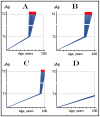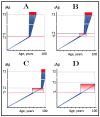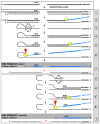Quintessential Synergy: Concurrent Transient Administration of Integrated Stress Response Inhibitors and BACE1 and/or BACE2 Activators as the Optimal Therapeutic Strategy for Alzheimer's Disease
- PMID: 39337400
- PMCID: PMC11432332
- DOI: 10.3390/ijms25189913
Quintessential Synergy: Concurrent Transient Administration of Integrated Stress Response Inhibitors and BACE1 and/or BACE2 Activators as the Optimal Therapeutic Strategy for Alzheimer's Disease
Abstract
The present study analyzes two potential therapeutic approaches for Alzheimer's disease (AD). One is the suppression of the neuronal integrated stress response (ISR). Another is the targeted degradation of intraneuronal amyloid-beta (iAβ) via the activation of BACE1 (Beta-site Aβ-protein-precursor Cleaving Enzyme) and/or BACE2. Both approaches are rational. Both are promising. Both have substantial intrinsic limitations. However, when combined in a carefully orchestrated manner into a composite therapy they display a prototypical synergy and constitute the apparently optimal, potentially most effective therapeutic strategy for AD.
Keywords: AβPP-independent generation of iAβ; RNA-dependent asymmetric amplification of human AβPP mRNA; amyloid cascade hypothesis 2.0 (ACH2.0); conventional and unconventional Alzheimer’s disease; depletion of iAβ via the activation of BACE1 and/or BACE2; initiation of translation from the AUG codon encoding Met671 of the intact or 5′-truncated human AβPP mRNA; intraneuronal Aβ (iAβ); neuronal integrated stress response (ISR); suppression of the neuronal ISR; therapeutic strategies for conventional and unconventional Alzheimer’s disease.
Conflict of interest statement
The authors declare no conflicts of interest.
Figures

























Similar articles
-
Production of Amyloid-β in the Aβ-Protein-Precursor Proteolytic Pathway Is Discontinued or Severely Suppressed in Alzheimer's Disease-Affected Neurons: Contesting the 'Obvious'.Genes (Basel). 2025 Jan 2;16(1):46. doi: 10.3390/genes16010046. Genes (Basel). 2025. PMID: 39858593 Free PMC article.
-
Alzheimer's Is a Multiform Disease of Sustained Neuronal Integrated Stress Response Driven by the C99 Fragment Generated Independently of AβPP; Proteolytic Production of Aβ Is Suppressed in AD-Affected Neurons: Evolution of a Theory.Int J Mol Sci. 2025 Apr 29;26(9):4252. doi: 10.3390/ijms26094252. Int J Mol Sci. 2025. PMID: 40362488 Free PMC article. Review.
-
Next Generation Therapeutic Strategy for Treatment and Prevention of Alzheimer's Disease and Aging-Associated Cognitive Decline: Transient, Once-in-a-Lifetime-Only Depletion of Intraneuronal Aβ (iAβ) by Its Targeted Degradation via Augmentation of Intra-iAβ-Cleaving Activities of BACE1 and/or BACE2.Int J Mol Sci. 2023 Dec 18;24(24):17586. doi: 10.3390/ijms242417586. Int J Mol Sci. 2023. PMID: 38139415 Free PMC article.
-
ACH2.0/E, the Consolidated Theory of Conventional and Unconventional Alzheimer's Disease: Origins, Progression, and Therapeutic Strategies.Int J Mol Sci. 2024 May 30;25(11):6036. doi: 10.3390/ijms25116036. Int J Mol Sci. 2024. PMID: 38892224 Free PMC article. Review.
-
The Amyloid Cascade Hypothesis 2.0 for Alzheimer's Disease and Aging-Associated Cognitive Decline: From Molecular Basis to Effective Therapy.Int J Mol Sci. 2023 Jul 31;24(15):12246. doi: 10.3390/ijms241512246. Int J Mol Sci. 2023. PMID: 37569624 Free PMC article.
Cited by
-
Production of Amyloid-β in the Aβ-Protein-Precursor Proteolytic Pathway Is Discontinued or Severely Suppressed in Alzheimer's Disease-Affected Neurons: Contesting the 'Obvious'.Genes (Basel). 2025 Jan 2;16(1):46. doi: 10.3390/genes16010046. Genes (Basel). 2025. PMID: 39858593 Free PMC article.
-
Alzheimer's Is a Multiform Disease of Sustained Neuronal Integrated Stress Response Driven by the C99 Fragment Generated Independently of AβPP; Proteolytic Production of Aβ Is Suppressed in AD-Affected Neurons: Evolution of a Theory.Int J Mol Sci. 2025 Apr 29;26(9):4252. doi: 10.3390/ijms26094252. Int J Mol Sci. 2025. PMID: 40362488 Free PMC article. Review.
References
-
- Volloch V., Rits-Volloch S. Principles of Design of Clinical Trials for Prevention and Treatment of Alzheimer’s Disease and Aging-Associated Cognitive Decline in the ACH2.0 Perspective: Potential Outcomes, Challenges and Solutions. J. Alzheimer’s Dis. Rep. 2023;7:921–955. doi: 10.3233/ADR-230037. - DOI - PMC - PubMed
MeSH terms
Substances
Grants and funding
LinkOut - more resources
Full Text Sources
Medical

